Kieran McCarthy, chief tour guide with Cobh Rebel Walking Tours in County Cork, is asking…

What Cobh Was Up To In 1916
Westview RIC Barracks in Cobh
If it’s true that a picture can say a thousand words, then the above photograph must be a true expression of that rule.
Those with only a cursory knowledge of Cobh’s republican history might instantly recognise the significance of this picture, through its location, the familiar family faces and the centenary time-line to 1916.
For those of you who have not made the connections – the location is the Tay Road on the northern outskirts of Cobh town. Many of the faces in the picture are those directly descendant from the Republican Volunteers who assembled in arms at that very location one hundred years to the day earlier, before marching off to join the rising in Cork City in 1916.
Today the site of this unique memorial stone plaque is situated in front of the gate of a Cork County Council roads depot. In 1916 however, the site was part of an underground reservoir owned by Cobh (Queenstown) Urban District Council which, then supplied water to the homes of the town.
It was at this site that the members of the Cobh Volunteers assembled before 1pm on Easter Saturday 1916, under the command of Captain Michael Leahy. Leahy had earlier instructed the men to bring all available weapons, ammunition and every piece of kit with them. The volunteers would have been in little doubt of the seriousness of what they were about to embark upon, indeed, some may have even expected not to be returning home after the fight, while all would have had their confessions heard by a priest before the day was over. None could have known however, how the events of the next 48 hours would transpire, especially that Cork and most of the rest of the country outside of Dublin would not see action or participate in the rising.
The rest is history as they say – and it’s my task and duty as the ‘Cobh Rebel Walking Tour’ guide, to relate their stories to you, from its inception in November 1913, right through to 1916 and afterwards when the volunteers re-armed and prosecuted what was to be become known as ‘The War Of Independence’ or ‘The Tan War’ as Republicans themselves would later refer to it.
It may come as a surprise to some living in Cobh today, as they look at the above picture and learn for the first time that some people and families they had always lived and grown up around, are direct decedents of some of the local republican fighters and politicians who took on an empire and transformed their town and country.
In the case of Cobh (formerly Queenstown), I would go a step further and say, those republicans succeeded in ‘Taking The Queen Out Of Cove’ and giving us Cobh. Republican families, like the Leahy’s, Fitzgerald’s, Ahern’s, O’Connell’s, The Moore’s and many others are still living among us today, and I, as chairman of the Cobh 1916 Centenary Committee along with my colleagues, were very honoured that many of those families came out to commemorate and honour the memories of their forefathers and foremothers at Easter last year, and long may they continue to turn out and honour our towns rich republican and revolutionary past at Eastertime.
It would be remiss of me to not acknowledge the support, both practicable and financial that Cork County Council and Cobh Municipal Council had provided to the Cobh 1916 Centenary Committee, for the purposes of erecting a number of monuments in the town, including the memorial plaque at the Tay Road, a 1916 monument at Casement Square and towards the development of a 1916 Garden of Remembrance at Westview – the site of the old RIC barracks, off the Barrack Hill.
The Cobh 1916 Committee has still much work to do and have further plans to commemorate other historical events in line with the states planned decade series of commemorations from 2013 to 2023. One of the Committee’s next tasks will be to see a wall mural painted at Harbour Row, to commemorate the Cobh women of Cumann na mBan. Indeed, to neglect to recognise the role that women played in the republican struggle, would be to deny a huge part of Irish history. Without trying to resort to clichés or to sound patronising, I have to say, without the women behind them, the republican men could not have achieved what they had.
It is equally an undeniable fact, that had the British not underestimated the role that republican women were playing in the struggle at the time, history as we know it might be telling us a different story today. It is time that republican women are honoured and given their rightful place in history, and we in Cobh are ready to acknowledge that the republican women of our town were as staunch and committed to the struggle as that of their comrades found anywhere in the country.
It is not my task or job to pass judgement on the past, but rather to convey the historical facts as they are before us. When I first began to research Cobh’s republican past in the early 1980’s, I was myself part of an armed republican struggle, which I was never in any doubt was a continuation of what past before me. Indeed, the more I dug and researched, the more familiar tales and similarities I encountered with the past and the then current struggle. That research was very valuable in that it allowed me to talk with and gather the stories of the last of those men and women who were part of the 1913-1923 struggle in my town. What was of particular note during those interviews, was the fact that most of those elderly republican veterans shared the view that the struggle to which I was then part of, was a continuation of their earlier unfulfilled struggle.
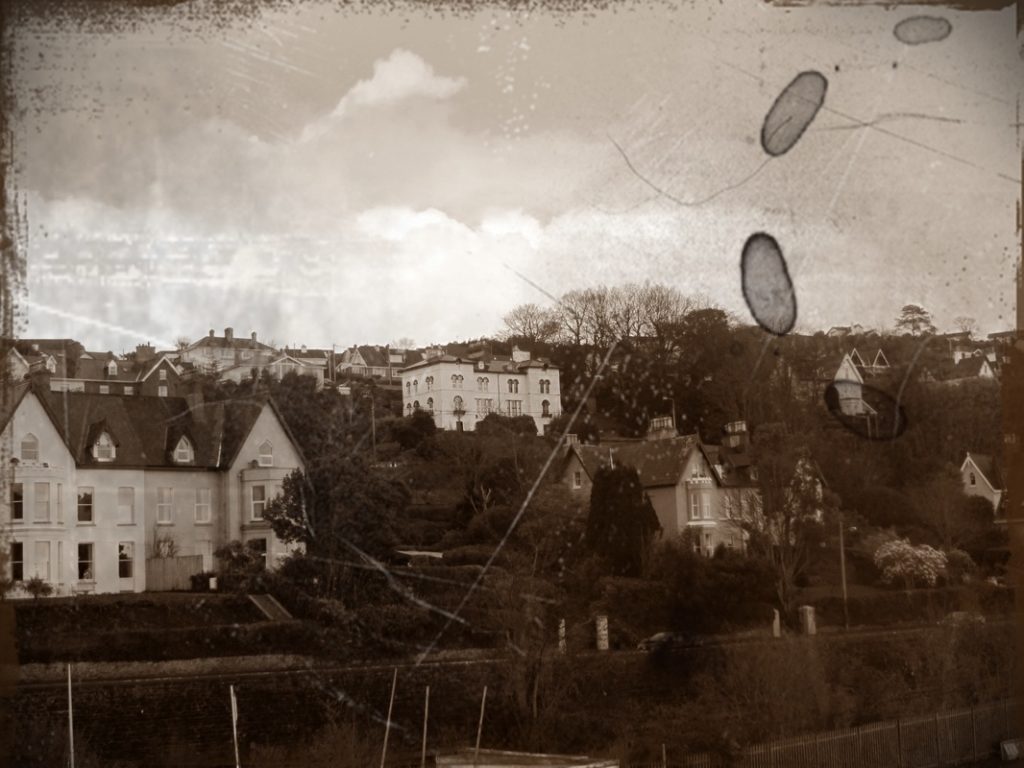
Large Houses in Rushbrooke
The Class Players
If we accept as I do, what history is telling us, that Cobh played a very unique part in the republican struggle in East Cork and in the nation itself, it would probably be for the following reasons. In terms of size and population, Cobh could have been described as an average Irish town of the day. In every other regard, Cobh was different. The town hosted a strong working class who relied on fishing and port related commerce for a living. Many others relied on the British navy based in the harbour for their livelihoods. The vast majority of those people and their families lived in overcrowded run-down tenements in the town and virtually all would have described themselves as Irish nationalists.
Cobh would have also hosted a large middle commercial trader class, who were without doubt doing very well from the commercial trade which the British military and naval services in the harbour were providing them with. Some of these commercial traders would have been unionist in outlook, some even serving on the Local Urban District Council, while the majority would have regarded themselves as constitutional nationalists. All would have recognised who’s hand was feeding them and they were hardly about to consider anything that would have radically upset that comfortable situation.
Then there were that third upper unionist class who were mainly of a retired military and naval officer background. These people resided mainly in the big houses on the higher and lower roads overlooking the harbour and in Rushbrooke on the western outskirts of the town. These families were staunch unionists and would have been opposed to Home Rule and self-rule of any kind for Ireland. Ironically, it was from the homes of this latter class, and with some success, that the local volunteer movement targeted when raiding for arms after 1916.
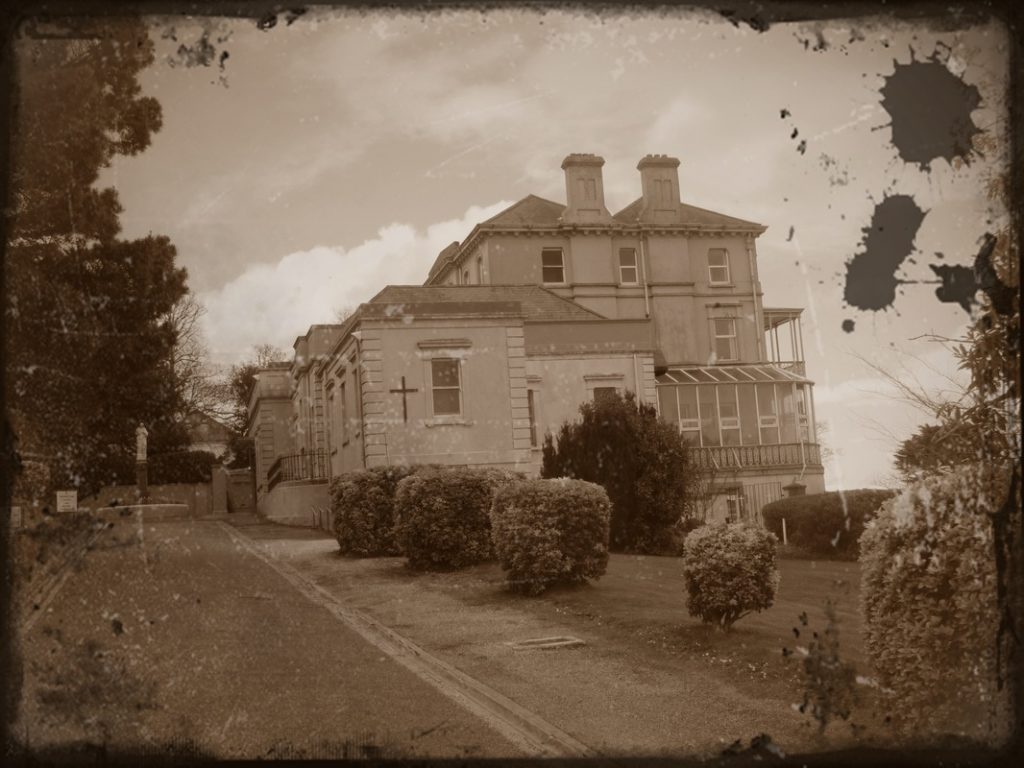
Admiralty on the Mount
As It Looked In 1916
Consider that in 1916 Cobh, the following landscape would have been before your eyes, were you to go on a walkabout of the town on any given day. As you looked out the harbour from the town front, you would have feasted your eyes on a port full of huge Dreadnought battleships leaving or entering the harbour as WW1 was raging. If you took in an eyeful of Spike Island you would probably note that up to 3,000 troops were posted there, along with a huge number of additional families in married quarters. Imagine the contracts and the amount of commercial trade that was taking place between those inhabiting the island and the traders back on the mainland of Cobh.
Over to the west of Spike and closer to the town, you would see Haulbowline island where the navy was based and where a huge construction project is well underway to build a new state of the art dry dock and basin. The British are placing huge prominence on the construction of this dockyard as its future is vital to the support of their war effort, so much so, the First Lord of the Admiralty Winston Churchill has personally visited the Island to inspect its progress. There are thousands of hired hands working on the project, the majority of them from Cobh.
If you were to turn around and walk up the barrack hill from Scott’s Square, you would come across the local RIC police Barracks half way up the hill. The Barracks, you would note is heavily manned by this armed force and is the nerve centre of British Intelligence (eyes and ears) in the town, and in the weeks after the failed rising, will experience a flurry of activity while communications are passing back and forth between itself and Dublin Castle, while it decides who locally is to face internment and maybe even execution.
If you were to continue on your journey up the hill towards the top of the hill area and headed a short journey east past Bond Street, you would see a huge building with a large naval flag mast flying the British naval ensign. You would of course be looking at the Admiralty on the Mount, the headquarters of all naval activity covering the Western Approaches to the south of Ireland – defences for Britain. The Admiralty as you would see, would also be guarded by a company of armed Royal Marines. You would see from the comings and goings around the building and around its grounds that it was a hive of activity.
A further mile and a half of your journey to the eastern outskirts of the town at Belmont, you would encounter a large camp of military hutments, occupied by a British Military Battalion, maybe the Cameron Highlanders, or some other regiment, depending on which one was on tour at the time. A short distance down the hill from the camp, you would find a large stone structure which is a military hospital and which serves many of the medical needs of military patients in Cobh and at times for those stationed in other military bases in the harbour.
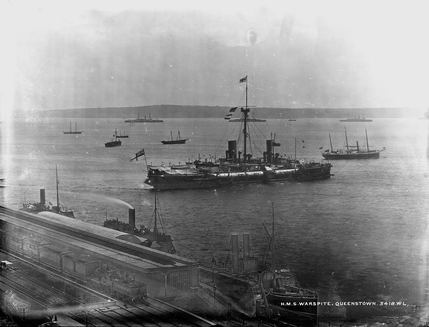
Naval Fleet in Cork Harbour

Home of Seamus Fitzgerald, East Beach
Why Should Cobh Rise Up?
When one takes all of the above in to account, what Cobh had going for itself in terms of jobs, business and prosperity, you might well ask yourself why would anyone in the town wish to lose that by rocking the boat and taking on the largest and most successful empire known in history up to that point. When one then takes into account the fact that most of the fathers of the local volunteers were naval reservists and that a good number of the teenage volunteers were themselves employed at the naval dockyard at Haulbowline, one wonders why they would bother. In fact, two of the local volunteer leaders who were interned after the rising, Michael Leahy and Seamus Fitzgerald were serving apprentices at the naval dockyard.
So why was Cobh so special? Cobh was special because not only did it organise itself earlier than most other areas in the county – having formed a volunteer company in November 1913 a full two weeks before the volunteers were established in Cork City. Cobh and Dungourney were the only two areas of East Cork to turn out for the rising at Easter 1916. After 1916, it was left to Cobh to organise the other towns and villages in east cork and when it came to raiding for arms, it was again left to the Cobh volunteers to supply the lesser equipped areas of the battalion with weapons.
When the first RIC barracks in the country was captured and cleared of its weapons on January 2nd 1920, it was led by Michael Leahy and his Cobh volunteers who took the surrender from the RIC at Carrigtwohill, and most of the preparation work for the attack was overseen beforehand by Cobh officers.
When the Brigade decided to set up a grenade factory at Blossom Grove near Knockraha, it again was overseen by a Cobh officer Henry O’Brien, and much of the work later carried out at the factory was undertaken by Cobh volunteers who had to go on the run from the authorities in Cobh.
“The furnace used at the Grenade factory was clandestinely constructed at Rushbrooke Dockyard, Cobh one night in late 1920, when the volunteers under the command of Captain Mick Burke seized control of the yard, placing security personnel under temporary arrest, after which several professional fabricators set to work to construct the furnace. A few hours later, the finished product was mounted onto prearranged transport and moved to its target location at Blossum Grove in the hours of darkness, and from which it was never discovered by the British.”
So we again come back to the question why was Cobh special and why did it so swiftly and effectively organise resistance to British rule -resistance to the hand that fed them, when others might have just as quickly embraced that hand? The answers probably lie in the fact that two senior officers of the Irish Republican Brotherhood resided in Cobh in the years leading up to 1913 -1916 and were quietly laying the groundwork for revolution. One, Patrick Curran of Armagh was Manager of Queenstown Coop at King Square and was known to have been purchasing weapons and ammunition from individual soldiers based at Belmont Hutments in the years leading up to 1916 and to a lesser degree afterwards. Mick Burke, who was Currans apprentice at the Coop stores and who would later go on to lead the Cobh Volunteers from August 1920, recalled how he was once sent by Curran to meet a military currier at Belmont for the collection of one such ammunition transaction. Mick Leahy would later claim that Curran had recruited him to the IRB along with Liam O’Brien of Galbally Limerick before 1913. O’Brien who had been a UCC student and champion hurler, worked in Cobh as a chemist assistant to the Wilson family. He would unfortunately die prematurely, shortly after being released from internment in Frangoch in late 1916.
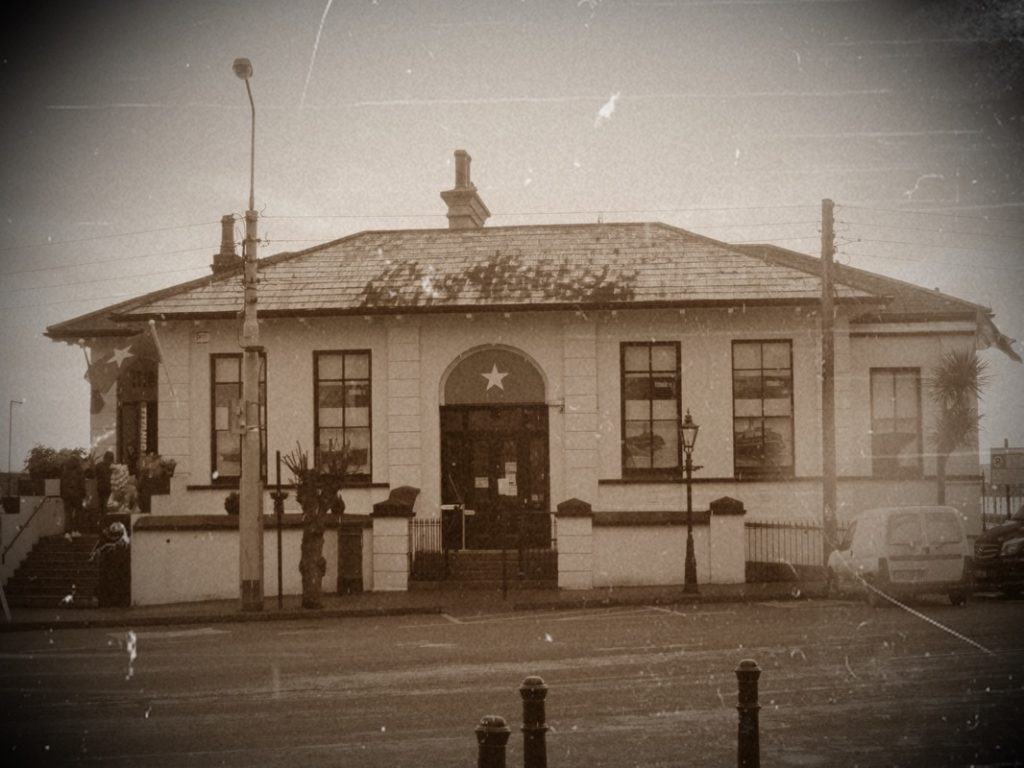
Old Cobh G.P.O
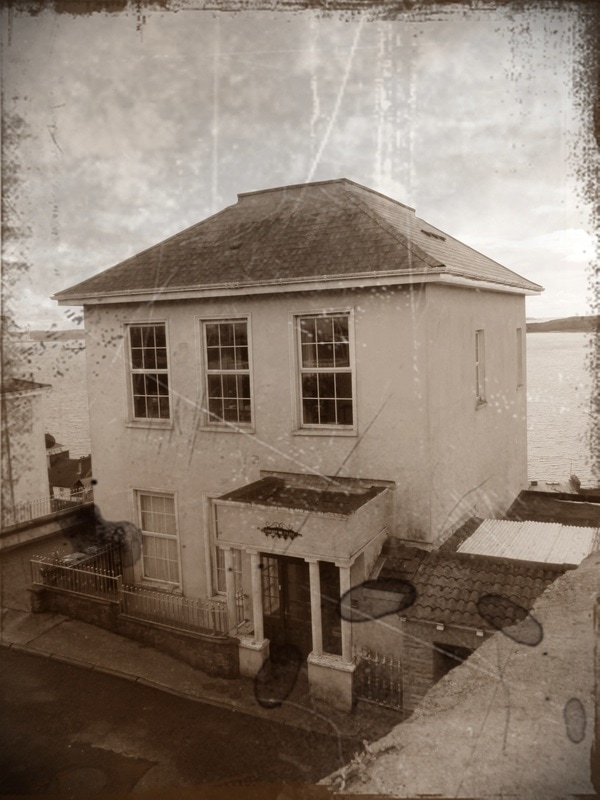
Ancient Order of Hibernians Hall
The other was P.S. O’Hegarty the Town Post Master who took up a post at the local GPO in 1911. O’Hegarty was well known to the British authorities as a prominent IRB officer, but who really didn’t give him much attention until after the outbreak of WW1. When they did, they weren’t about to take any chances and immediately focused on his position as poster master in one of their most critical and prominent outposts. Using their new military emergency powers DORA – defence of the realm act, the British accused O’Hegarty of using his position at the Cobh GPO to communicate with the Germans by telegraph. The military commander based at Cobh then ordered the IRB leader to be excluded from residing at Cobh, Midelton or Youghal and left him with the option of keeping his job, only if he was prepared to transfer to Wales, which he did.
O’Hegarty later wrote that he was a member of the Cobh volunteers, but its far more likely from the testimonies of others, that he was more of a behind the scenes organiser and along with Patrick Curran, were mainly responsible for Cobh being so ready and available when the time arrived and the local branch of Irish Volunteers were established at the Ancient Order of Hibernians Hall on Church Street on that November night in 1913. That meeting was held under the guise of Irish classes, as permission to hold a meeting in the Hall for the purpose of starting a branch of the Irish volunteers was thought might not be forthcoming. Yet, more than twenty signed up to join on the night.
It’s a testimony to the resilience and professionalism of the Cobh volunteers and to the support of the local community, that by the time 1920 came around, local republican intelligence officers had penetrated the local British intelligence establishment with agents working inside the Admiralty buildings and through sympathetic police officers at the towns RIC barracks.
Let me treat you to their story by taking you to the streets they walked, fought and defended and let me tell you their story as they lived and wrote it.
Why not book a place on Cobh Rebel Walking Tour now!
Kieran McCarthy


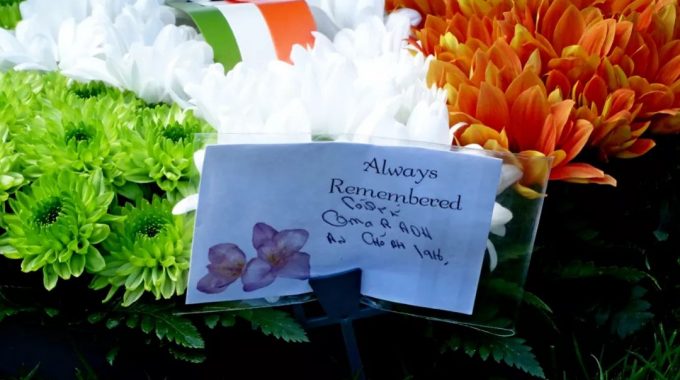
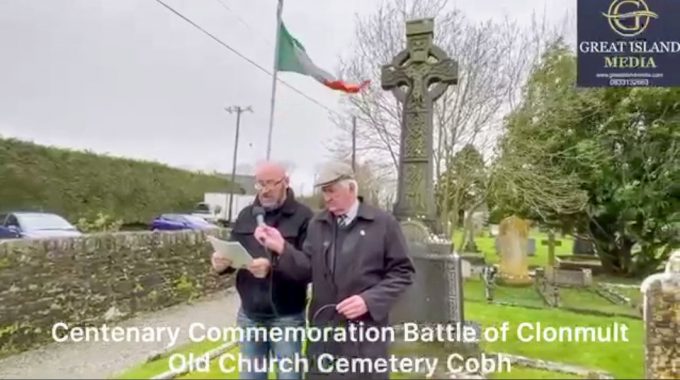
This Post Has 0 Comments